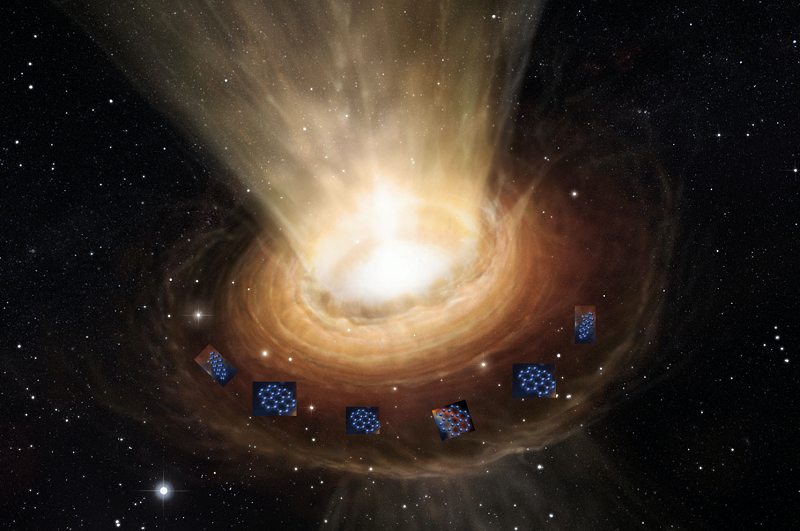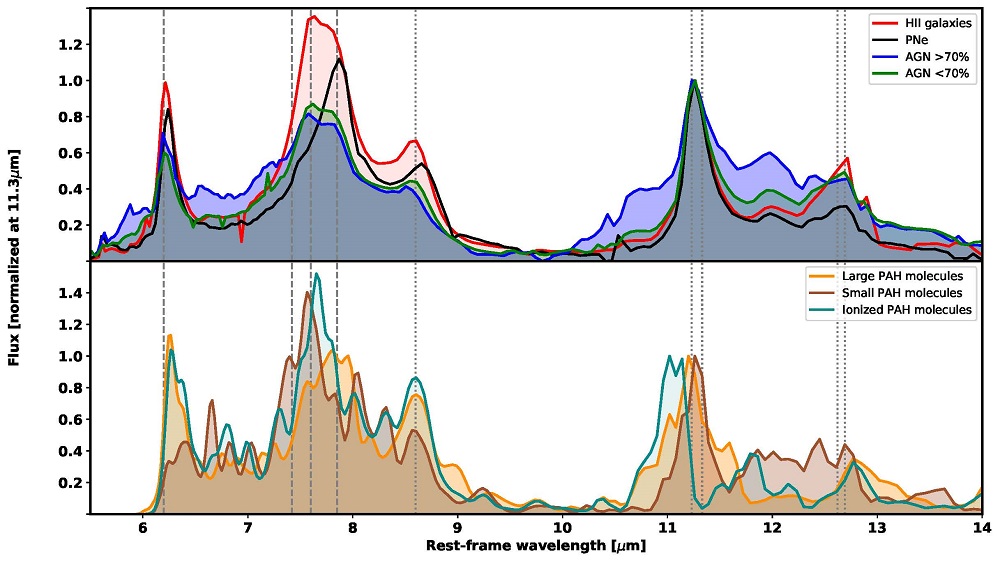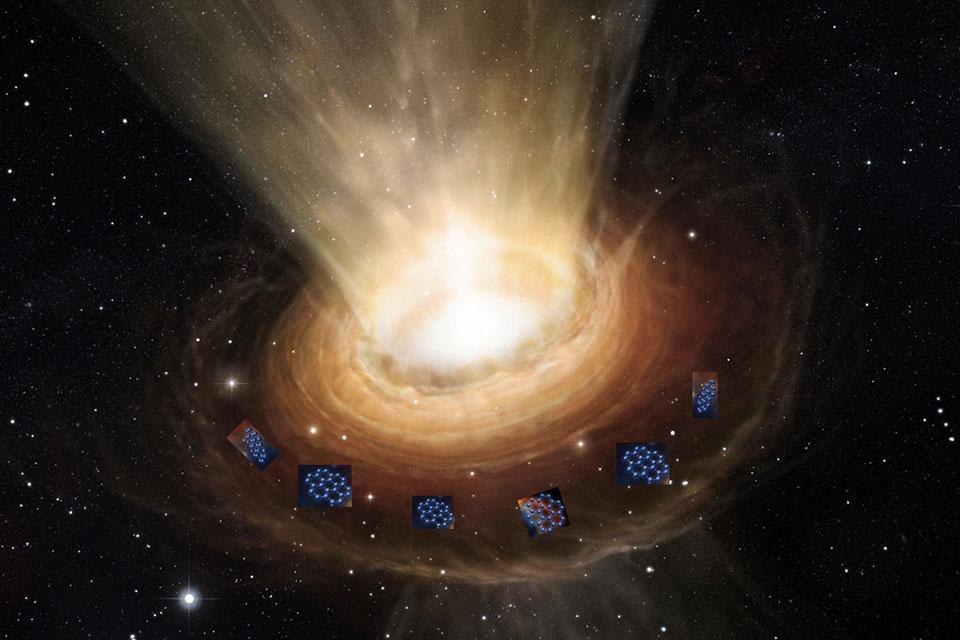Supermassive black holes (SMBH) are believed to play an instrumental role in the evolution of the galaxy where they reside – known as the host galaxy – as evidenced by the existence of tight correlations between the mass of the SMBH and the large-scale properties of the host galaxy. It is now well established that the growth of the SMBH through accretion of gas and the star-forming activity in the host galaxy appear to have similar evolutionary paths – that is, both activities reach their peak at the same time, when the Universe was roughly less than half its current age. Theoretical models suggest that feedback from growing SMBH, in the form of powerful outflows (as shown in Figure 1), can have a significant impact on the host galaxy and it may be responsible for shutting off the star-forming activity and maintaining the galaxy’s quiescence after star-formation has been quenched.

However, because star formation is difficult to measure in the vicinity of an active galactic nucleus (AGN where an AGN is the observed manifestation of gas accreting onto a SMBH), there is a lot of uncertainty about the exact nature of the interaction between the two processes and the exact role that SMBH feedback plays in the evolution of the host galaxy. A number of diagnostic tools that probe star formation and black-hole accretion are available at optical wavelengths, however, these diagnostics may not be very useful for objects where dust obscuration is significant. Therefore, studying these processes at mid-infrared (mid-IR) wavelengths, where dust extinction is significantly lower compared to optical wavelengths, offers significant advantages. Among the various mid-IR diagnostics, emission from Polycyclic Aromatic Hydrocarbons (PAH) offers a viable alternative to measuring star formation in the vicinity of AGN.

PAH molecules are made up of at least two benzene rings (see Figure 2) and are among the most plentiful and widespread class of organic compounds in the Universe. On Earth, PAH occur naturally after incomplete combustions of carbon-based substances. In space, PAH can be found everywhere from planets to our own galaxy and as far out as distant galaxies in the Universe. These large molecules are often found in regions where stars and planets form and therefore can be used to trace areas of star formation.
Density functional theory (DFT), a cost-effective solution of Schrödinger’s equation, has the power to provide powerful insights into the interpretation of astronomical infrared spectra arising from transitions between different vibrational modes of a variety of PAH molecules. Using DFT, our group (Rigopoulou et al. 2021) has computed theoretical spectra for a variety of PAH molecules of different sizes, structures and charges. These were subsequently used to construct diagnostic grids in order to investigate how the PAH features respond to the presence of an AGN (Rigopoulou et al. 2021).
By employing archival data of AGN and star-forming galaxies taken with the infrared spectrometer on board the Spitzer Space Telescope in Garcia-Bernete et al. (2021), we investigated the impact the AGN may have on PAHs and, in particular, whether the strong radiation field created by the AGN may destroy the PAH carriers. The analysis of mid-IR spectra from regions very close to the AGN and those from the galaxy’s disk revealed that PAH band ratios measured in the central AGN-dominated spectra are best matched to the theoretical spectra of large and neutral PAH molecules (a comparison of real galaxy spectra and modelled spectra is shown in Figure 3).

In contrast, the PAH band ratios derived from regions within the galaxy’s disk appear to be identical to spectra measured in star-forming galaxies (and were best modelled using medium-sized and more ionized PAH molecules). We interpret these trends as an indication that the AGN does indeed influence the distribution of PAH molecules in the host galaxy by destroying the smaller PAH molecules in the central AGN regions. Although our present analysis is limited to only a handful of galaxies where such measurements are currently possible, the results highlight the huge diagnostic power of PAHs to probe the AGN-host galaxy connection.
The imminent launch of the James Webb Space Telescope (JWST – at the time of writing the launch is scheduled for 22 December 2021) will transform studies of PAH molecular spectroscopy in AGN by providing an unprecedented level of spectral and spatial detail. With a mirror of 6.5 m diameter, JWST will be able to take images with enhanced resolution while the sensitivity of its instruments will enable measurements of light from faint/distant objects as well as low brightness regions. By measuring PAH emission from nuclear and circumnuclear regions in galaxies we will be able to elucidate the impact of the central AGN on its host galaxy and advance our understanding of the survival of PAH molecules in the harshest environments in the Universe.
Further reading:
Polycyclic Aromatic Hydrocarbons in Seyfert and star-forming galaxies, Garcia-Bernete, I., Rigopoulou, D., Alonso-Herrero, A., Pereira-Santaella, M., Roche, P.F. and Kerkeni, B., 2021, Monthly Notices of the Royal Astronomical Society, accepted for publication in October 2021. https://doi.org/10.1093/mnras/stab3127
The properties of Polycyclic Aromatic Hydrocarbons in galaxies: constraints on PAH sizes, charge and radiation field, Rigopoulou, D., Barale, M., Clary, D., 2021, Monthly Notices of the Royal Astronomical Society, 504, 5287. https://doi.org/10.1093/mnras/stab959

